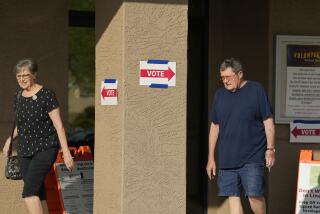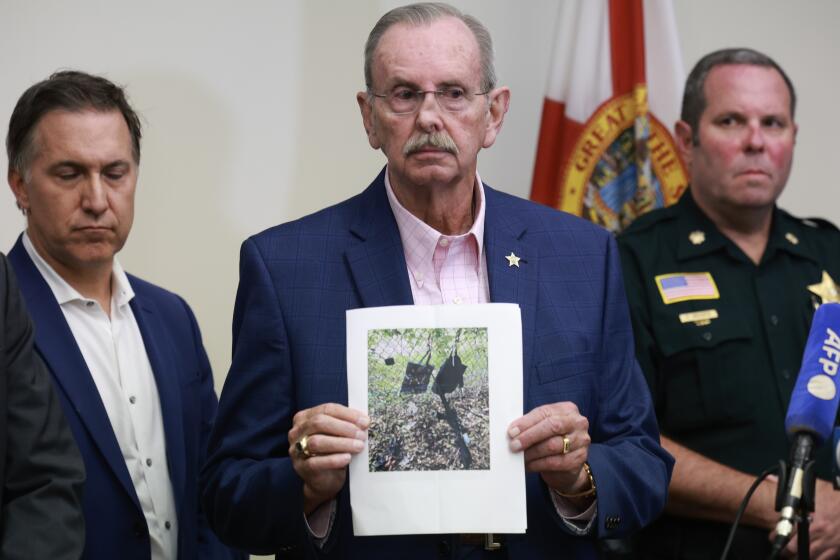Speech vs. property rights
Veteran peace activist Dennis Apel says he was exercising his 1st Amendment rights when he was arrested after marking the start of the 2003 Iraq war by throwing some of his blood at a Vandenberg Air Force Base sign north of Santa Barbara.
But after a second trespassing arrest at Vandenberg four years later, the military banned Apel from protesting in the area, including in a space across from the base’s main gate along Highway 1, which had been specifically set aside for peaceful public protests.
This clash between military authority and free speech reached the Supreme Court on Wednesday, and it quickly became clear the justices were ready to rule that military property rights in this case trumped Apel’s free-speech claims because the military may control protests on its land, even in areas that are used for public schools and highways.
The justices repeatedly said the case was a matter of property law, not the 1st Amendment. They pointed to a federal law that makes it a crime to reenter a military installation after being barred by the commander.
Apel had been barred from Vandenberg after his earlier arrests, which led to convictions. But he believed he could legally protest in the designated area across Highway 1 from the base.
“I didn’t reenter the base,” he said on the court steps Wednesday. “No one should be arrested for protesting on a public highway.”
The justices, however, said he was mistaken. The property agreement with Santa Barbara “makes it very clear that the military commander has authority to exercise control over the easement property,” said Justice Anthony M. Kennedy, referring to the part of Highway 1 that runs through the base.
Apel’s attorney, Erwin Chemerinsky, law dean at UC Irvine, pointed to court precedents that protect free speech and leafleting near military bases.
“This is a case about the right to peacefully protest on a fully open public road, in a designated protest zone,” Chemerinsky said.
But whenever he mentioned free speech, the justices cut him off. “Let’s just concentrate on the property ownership,” Kennedy said.
When Chemerinsky suggested the court could avoid a 1st Amendment problem by limiting the military’s authority over public roads, Justice Antonin Scalia objected. “You keep sliding into the 1st Amendment issue,” he said. “You can raise it, but we don’t have to listen to it.”
Justice Samuel A. Alito Jr., a New Jersey native, questioned how far the military’s authority should extend. “Suppose that [Apel] just wanted to take a drive up to Santa Barbara, or maybe -- if it’s not illegal in Southern California -- maybe he wanted to walk along the Pacific Coast Highway. Would he commit misdemeanor by doing that?”
No, said a government attorney, because the order barring him from reentering the base says he may traverse the area on the highway.
The case, the United States vs. Apel, is likely to result in a ruling that strengthens the authority of base commanders over the seemingly public areas that are military property.
During the Vietnam War era, the high court reversed the conviction of a peace protester who was charged with passing out leaflets on a public street that was within the limits of Ft. Sam Houston in Texas. The court said then that because it was used as a public street, the military could not exercise exclusive control.
The U.S. 9th Circuit Court of Appeals, citing that precedent, overturned trespassing convictions against Apel and other protesters who were arrested along Highway 1 near Vandenberg. The appeals court said the arrests were illegal because the strip of land along the highway was not in the “exclusive possession” of the military.
--
More to Read
Get the L.A. Times Politics newsletter
Deeply reported insights into legislation, politics and policy from Sacramento, Washington and beyond. In your inbox three times per week.
You may occasionally receive promotional content from the Los Angeles Times.











